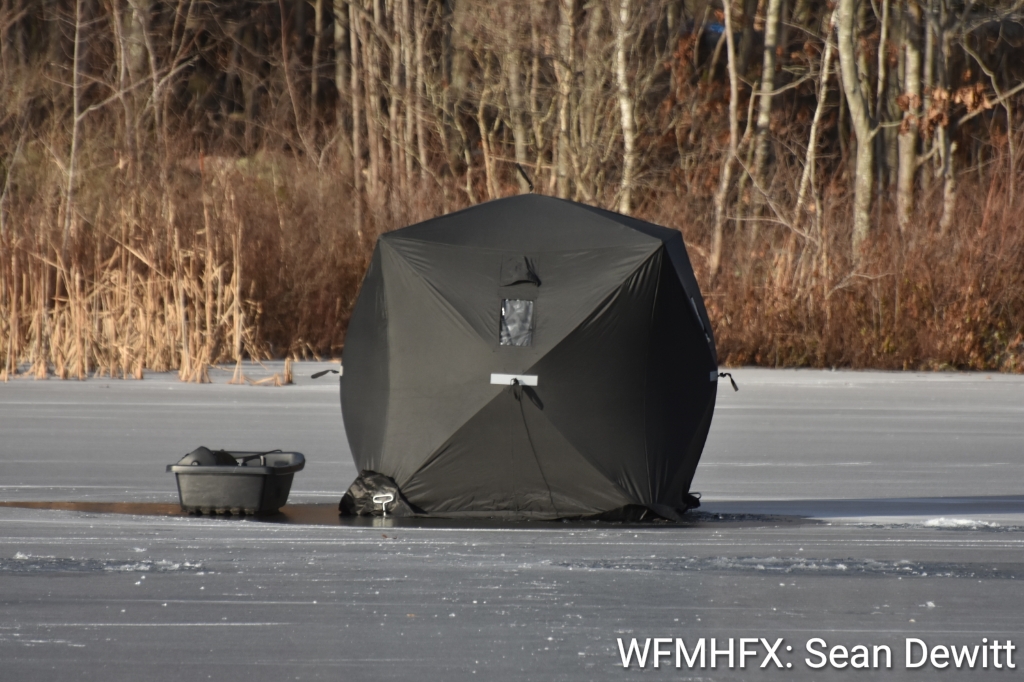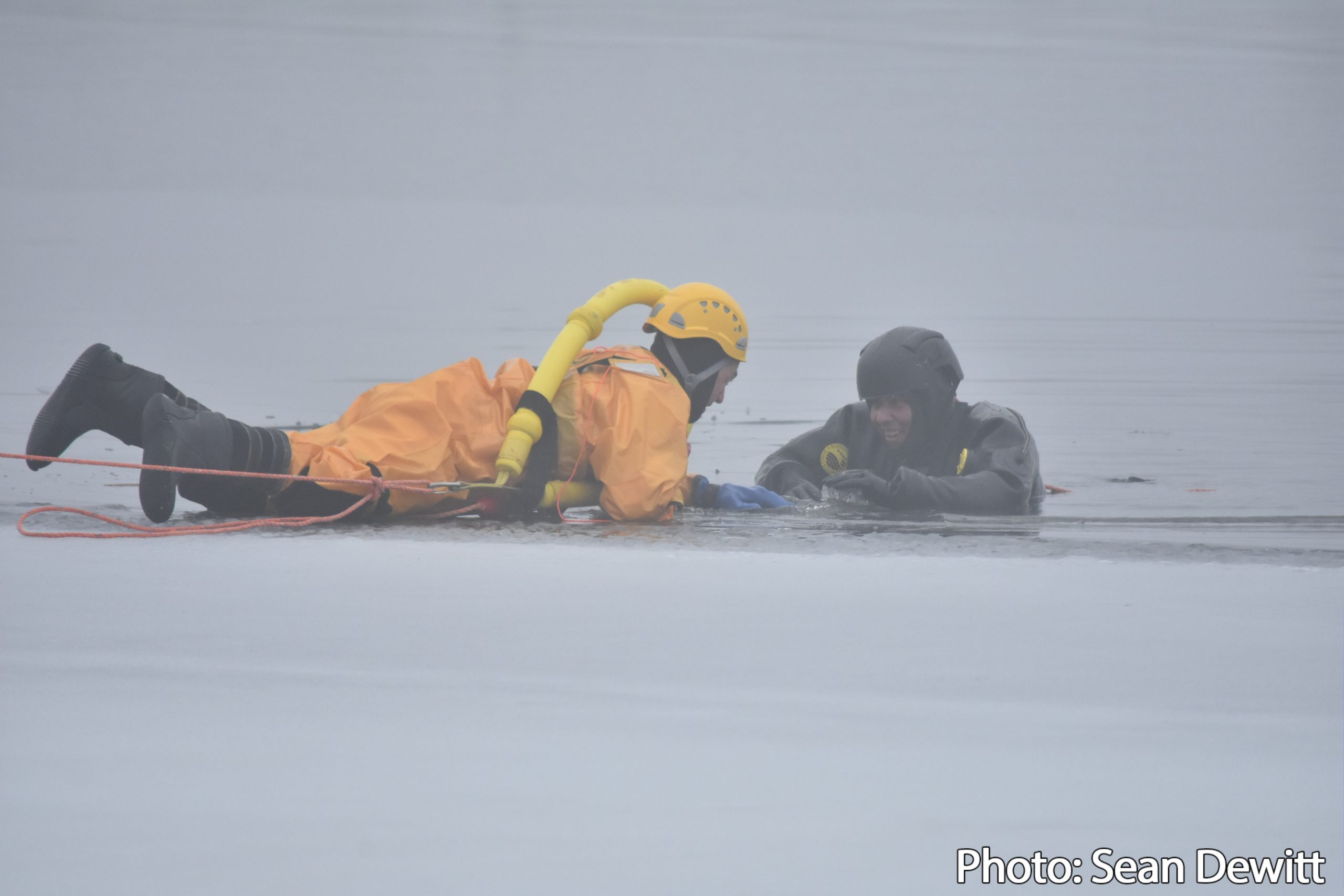**** Red Cross Release
Repost – Ice Safety
Know the dangers of ice

Ice Factors
Many factors affect ice thickness including type of water, location, the time of year and other environmental factors such as:
- Water depth and size of body of water.
- Currents, tides and other moving water.
- Chemicals including salt.
- Fluctuations in water levels.
- Logs, rocks and docks absorbing heat from the sun.
- Changing air temperature.
- Shock waves from vehicles traveling on the ice.
Ice Colour
- The colour of ice may be an indication of its strength.
- Clear blue ice is strongest.
- White opaque or snow ice is half as strong as blue ice. Opaque ice is formed by wet snow freezing on the ice.
- Grey ice is unsafe. The grayness indicates the presence of water.
Minimum ice thickness should be:
- 15 cm for walking or skating alone
- 20 cm for skating parties or games
- 25 cm for snowmobiles.

Remember – thickness is only one consideration while enjoying activities on ice, and the minimum thicknesses are guidelines only. Local conditions and the type of water body will affect the ice strength. Check with local authorities for information on local ice conditions before heading out on the ice. Obey posted signs indicating when and where ice surface is acceptable for activities. Avoid going out on ice at night.

When You Are Alone On Ice
If you get into trouble on ice and you’re by yourself:
- Call for help.
- Resist the immediate urge to climb back out where you fell in. The ice is weak in this area.
- Try to relax and catch your breath. Turn yourself toward shore so you are looking at where you entered onto the ice. The ice is more stable close to shore.
- Reach forward onto the broken ice without pushing down. Kick your legs to try to get your body into a horizonal position.
- Continue kicking your legs, and crawl onto the ice.
- When you are back on the ice, crawl on your stomach or roll away from the open area with your arms and legs spread out as far as possible to evenly distribute your body weight. Do not stand up! Look for shore and make sure you are crawling in the right direction.
When You Are With Others On Ice
- Rescuing another person from ice can be dangerous. The safest way to perform a rescue is from shore.
- Call for help. Consider whether you can quickly get help from trained professionals (police, fire fighters or ambulance) or bystanders.
- Check if you can reach the person using a long pole or branch from shore – if so, lie down and extend the pole to the person.
- If you go onto ice, wear a PFD and carry a long pole or branch to test the ice in front of you. Bring something to reach or throw to the person (e.g. pole, weighted rope, line or tree branch).
- When near the break, lie down to distribute your weight and slowly crawl toward the hole.
- Remaining low, extend or throw your emergency rescue device (pole, rope, line or branch) to the person.
- Have the person kick while you pull them out.
Move the person to a safe position on shore or where you are sure the ice is thick. Signal for help.




